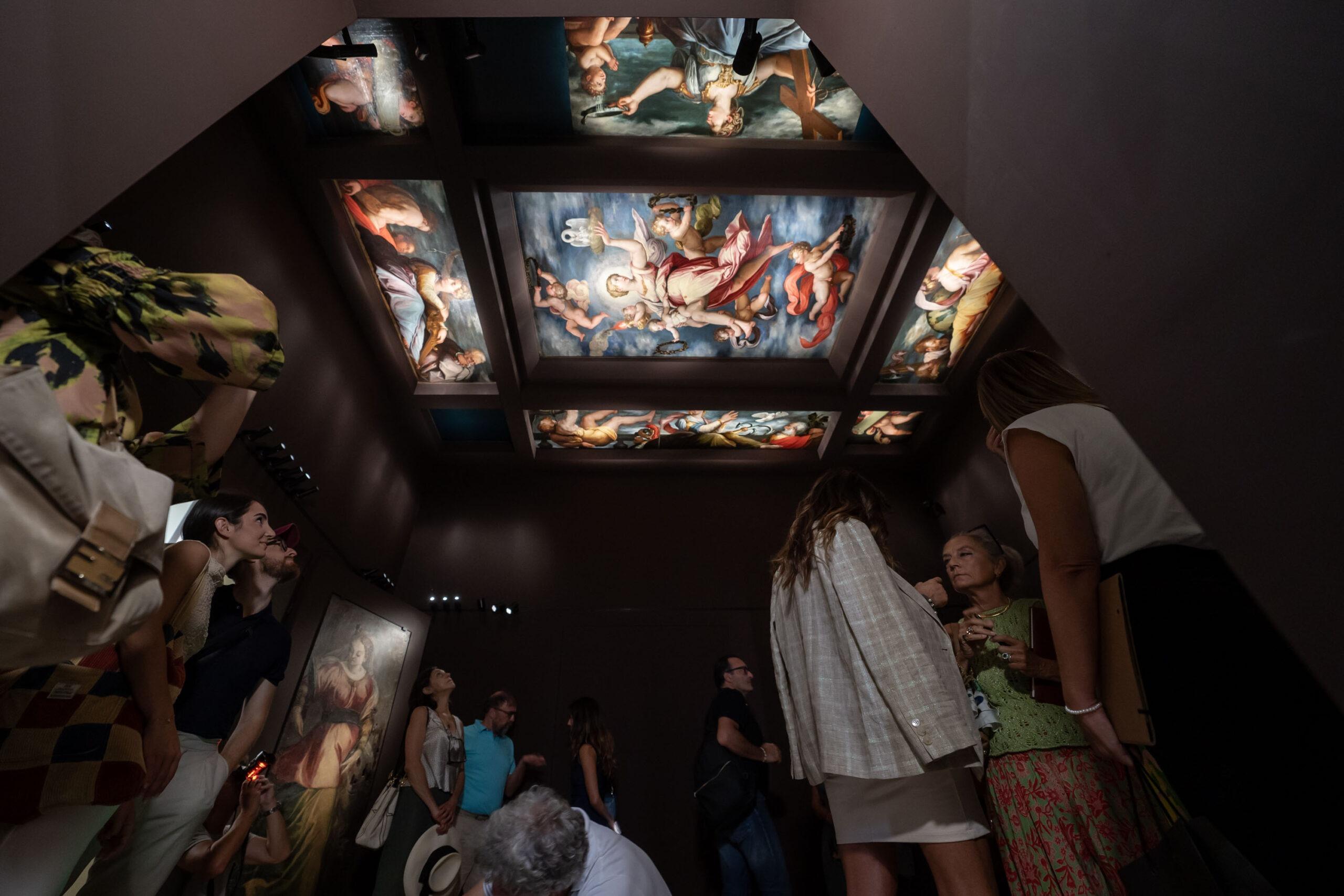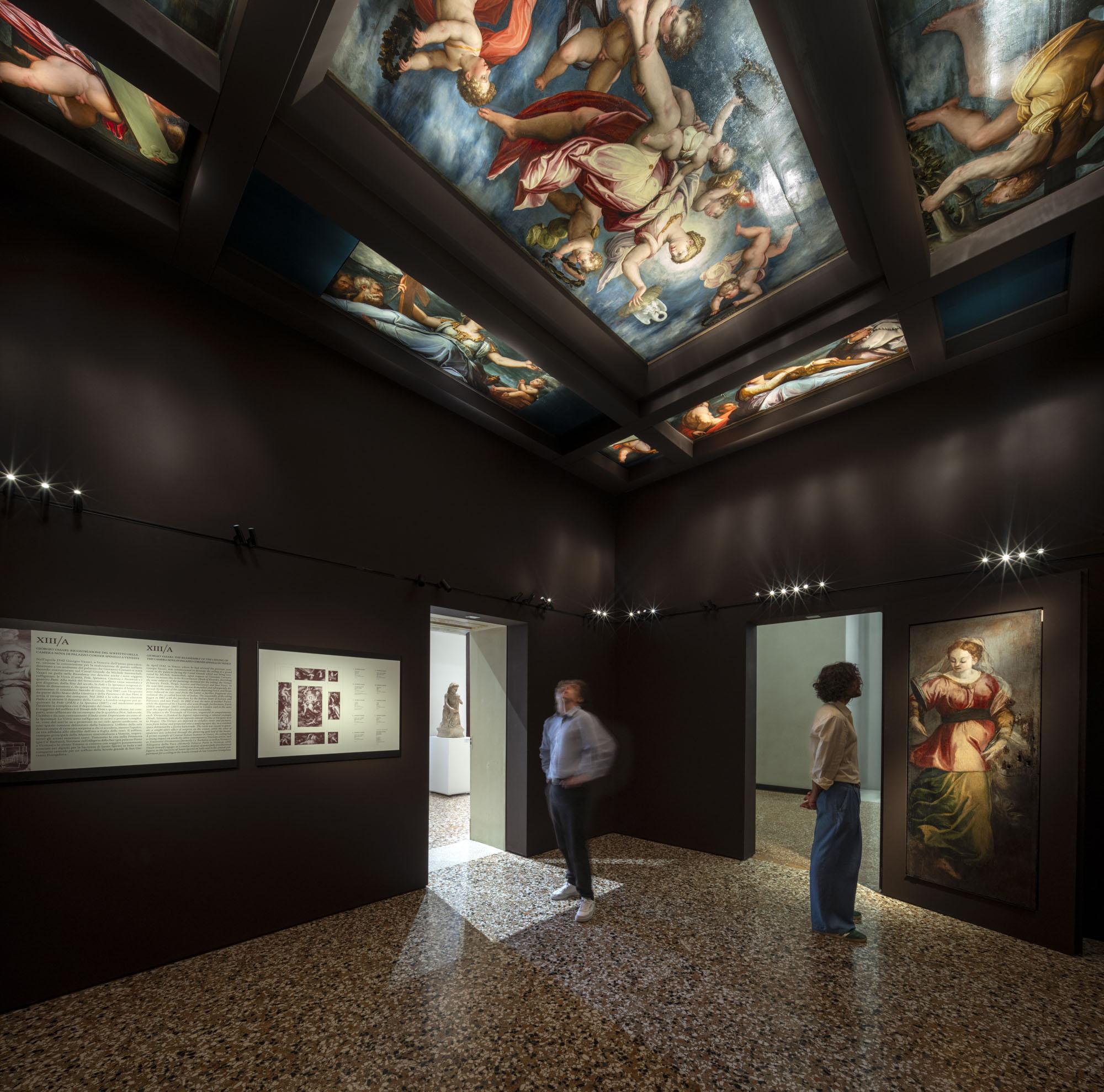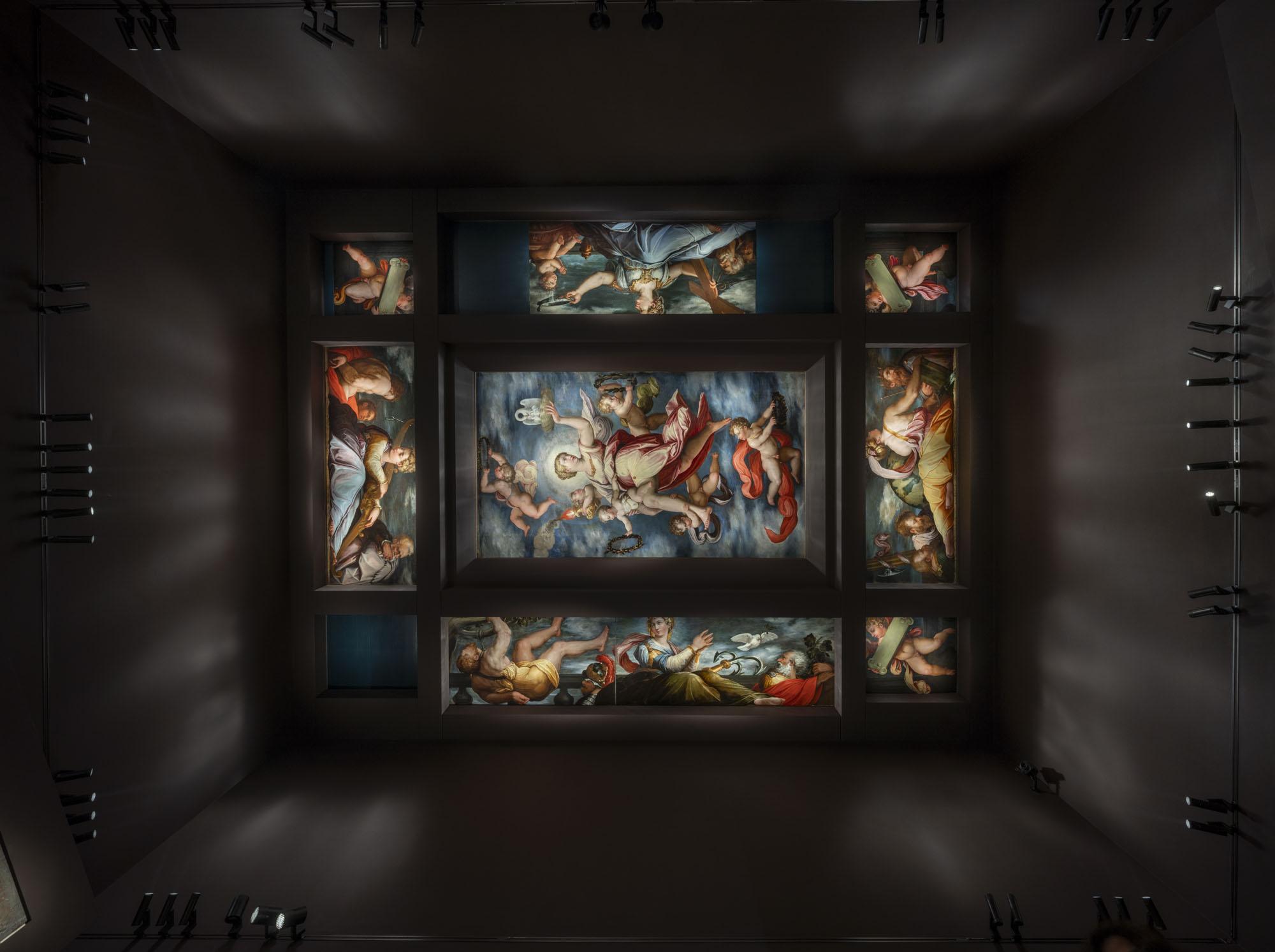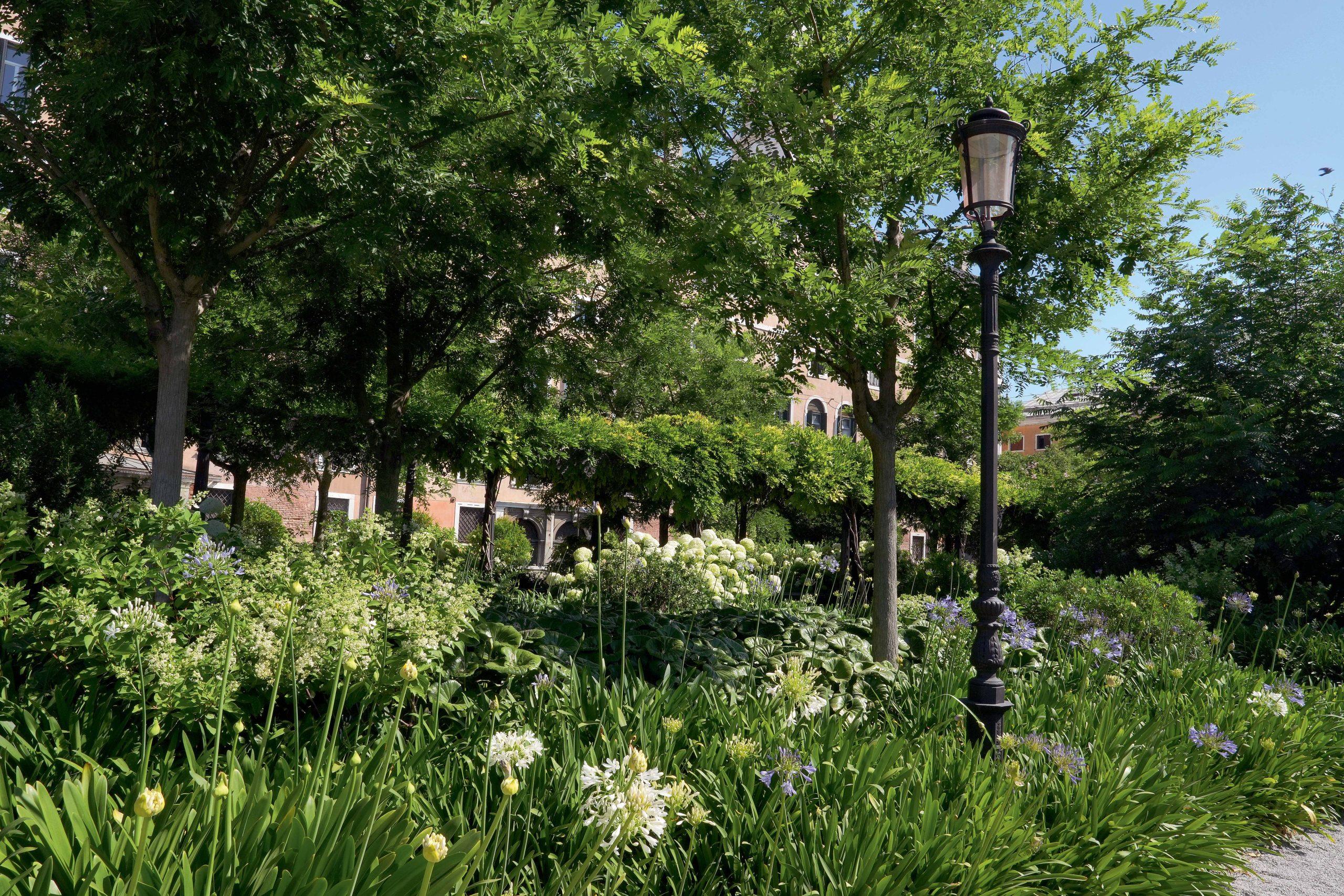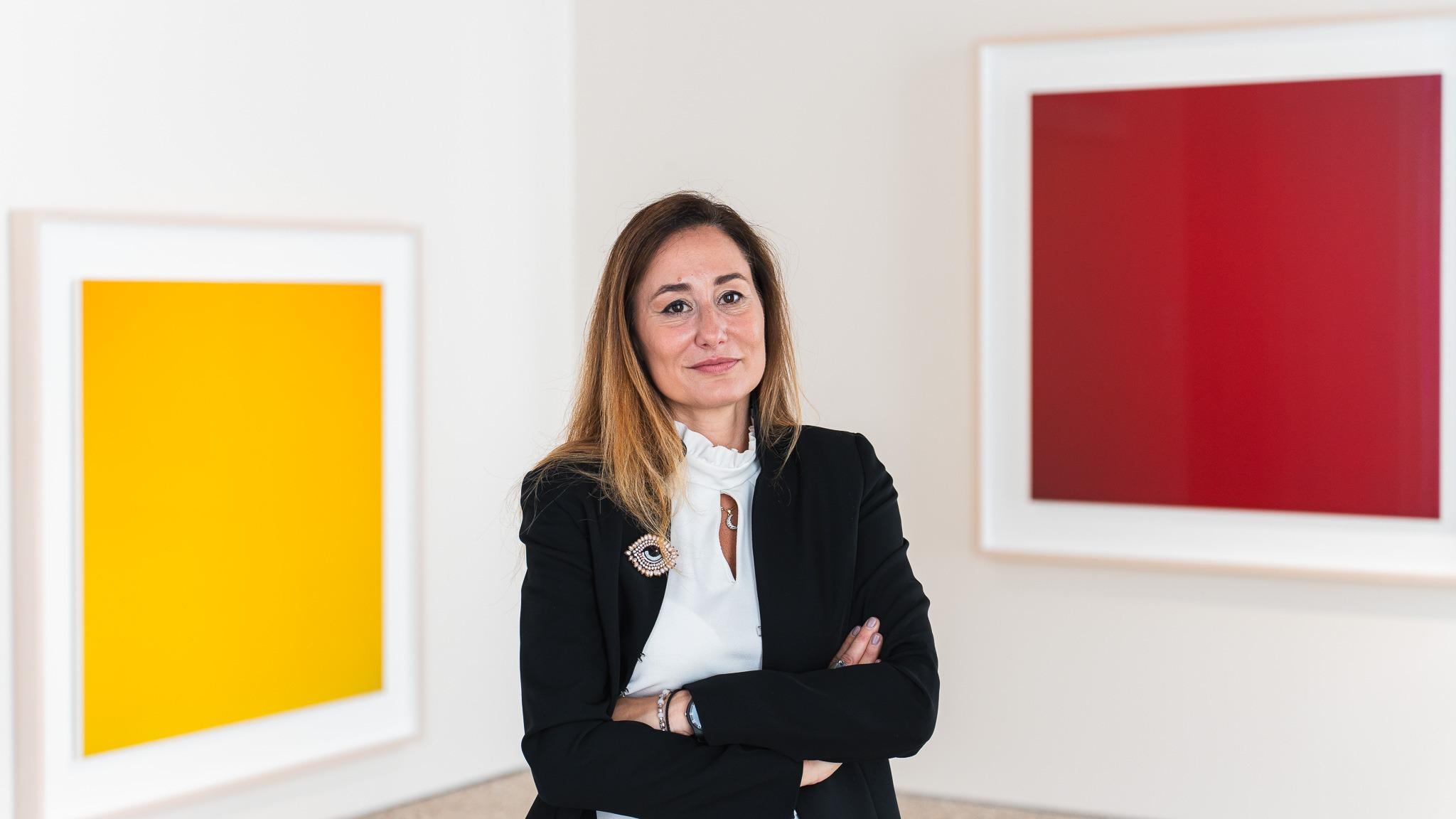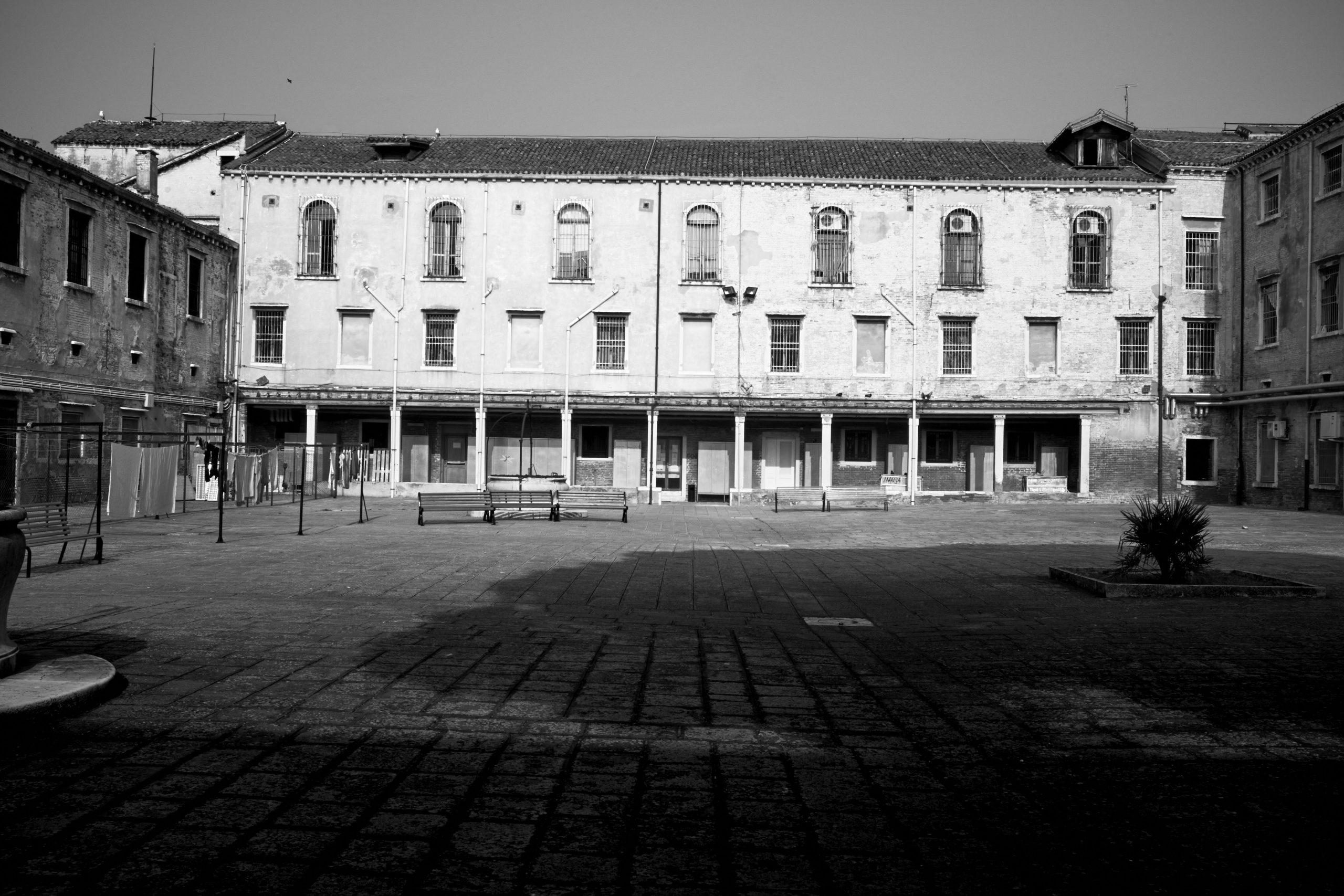In the year in which we celebrate the 450th anniversary of the death of Giorgio Vasari, the Gallerie dell’Accademia in Venice welcomes the complete reconstruction of the wooden ceiling painted by the Arezzo painter and art historian for the Venetian Palazzo Corner Spinelli
Galileo maintained that science proceeds by trial and error, in a formula echoed, centuries later, by the philosopher Karl Popper. The progress of the history of art is perhaps no different from science: a path often made of obstacles, crossroads and contradictions. This is the story of one of the most extraordinary Venetian masterpieces by the Arezzo painter, writer and biographer Giorgio Vasari. In fact, starting from a single fragment of the complex section painted by Vasari in Venice, two scholars, Rossella Cavigli and Luisa Caporossi, managed, in 2014, to recompose the whole, thanks, at the same time, to the research and tireless commitment of Giulio Manieri Elia, director of the Gallerie dell’Accademia in Venice, who dedicated more than twenty years of his career to this incredible undertaking.
In 1542, Giorgio Vasari was in Venice and painted the wooden ceiling of a room, the so-called camera nova, for the palace that the noble and influential Giovanni Corner had recently purchased on the Grand Canal.
The ceiling is made up of nine panels depicting Allegories of Virtues: Charity dominates in the centre, Hope and Faith on the longer sides, Patience and Justice on the shorter sides, while in the corners there are four Putti with signs, an empty sign, on which everything can still be written, in a suspended time that is the leaden sky against which the protagonists and figures of this story stand out.
Already at the end of the eighteenth century the panels were removed from the ceiling and ended up on the art market, both in Italy and abroad. Thanks to a massive fundraising campaign by the Ministry of Culture, which involved many private entities, today the Vasari panels have been brought back together (only two fragments, of Faith and a Putto, are missing) and since 28 August they have been displayed on the ceiling along the Palladian loggia of the Gallerie dell’Accademia, where they will be permanently exhibited as part of the museum collection.
Within an intricate puzzle of findings and missing pieces, there is one piece in particular that allowed for the wonderful ceiling to be reconstructed and admired today, after almost five centuries.
In 1980 the Italian state purchased a painting, The Suicide of Judas for the Vasari house in Arezzo. “The affinities and assonances with the Venetian ceiling were immediately evident”, says Luisa Caporossi, “but for decades the painting was considered evidence of a second unknown Venetian decoration by Vasari, it not being deemed possible that a Judas could be part of a ceiling with Virtues”.
The chance to compare, with the restoration, all the panels then available painted by Vasari in Venice (except that of Hope, which was still in London) immediately highlighted that they had identical construction and figurative characteristics, such as the balustrade present on all of them.
“The empty spaces around the central panel of the ceiling would certainly have contained other painted parts, and it’s very likely that Judas’ place was somewhere in there”, observes Rossella Cavigli, who oversaw the restoration of the panels, “but it was only when we placed the photo, found in the archive, of Hope next to that of the Judas of Arezzo, that we realized Luisa was on the right track with her hypothesis of connecting (like with the Visconti Tarot’s Triumphs) Hope to Judas as the personification of Despair: it was the same painting. A pink hem of Virtue’s dress continued in the Tuscan painting, and part of the red plume of the soldier’s helmet at Judas’ feet was still visible on the edge of the English painting”. As Luisa Caporossi recalls, “we were thinking about that painting in the room that had once been the office of Anna Maria Maetzke, the art historian and Superintendent of Arezzo [who passed away in 2004] who had purchased the Judas, and which had unworthily become my office for a few months. So in the same place where Judas’ return home had begun, the journey was completed”.
The Arezzo panel does not, therefore, depict Judas’ suicide, but a personification of the concept of Despair, according to a well-established iconographic tradition that shows the desperate man at the moment he decides to kill himself. The Virtues painted by Vasari, identifiable through symbolic attributes, are thus placed next to other figures placed as a corollary that express a concept associated or contrasting with the main theme. It is therefore a single detail, namely the correct attribution of a negative example (Judas taking his own life) to the decorative apparatus of the ceiling, that has provided the interpretative key to the iconology of the individual sections, attributing new meaning to the unity of the composition. “An event that few museums in the world can boast and which crowns a long effort of acquisition, restoration, preliminary study and planning of the reassembly of the sections of the whole”, underscores the director of the Gallerie dell’Accademia, Giulio Manieri Elia.
The director himself oversaw the purchase of Hope, owned by the Austrian publisher, a naturalized British citizen, Weidenfeld. “I went to London”, he recalls in the volume published by Marsilio Arte, “to see it thanks to the support of Nicolas Penny, former director of the National Gallery in London, who took me to the Weidenfeld house, along with some workers from the London museum who came to move the work. Placed above the door in the famous publisher’s office, it was accompanied, on the wall, by an unusual parade (for a person of Jewish origin) of portraits of Roman pontiffs from the sixteenth and seventeenth centuries. The purchase, which on this occasion had an exceptional spokesperson in the person of the Oscar winner James Ivory, was very quick and concluded in July 2017, making use of a substantial ministerial contribution and the prompt financial support of Venetian Heritage and the Venice in Peril Fund”.
An unthinkable operation until some time ago, which 450 years after his death brings Vasari back to Venice.


INFO
GALLERIE DELL’ACCADEMIA
Campo della Carità 1050, Venice
https://gallerieaccademia.it/
Cover photo: The reassembled Vasari ceiling at the Gallerie dell’Accademia, Venice. Installation view, photo Matteo de Fina
Related products
Related Articles




